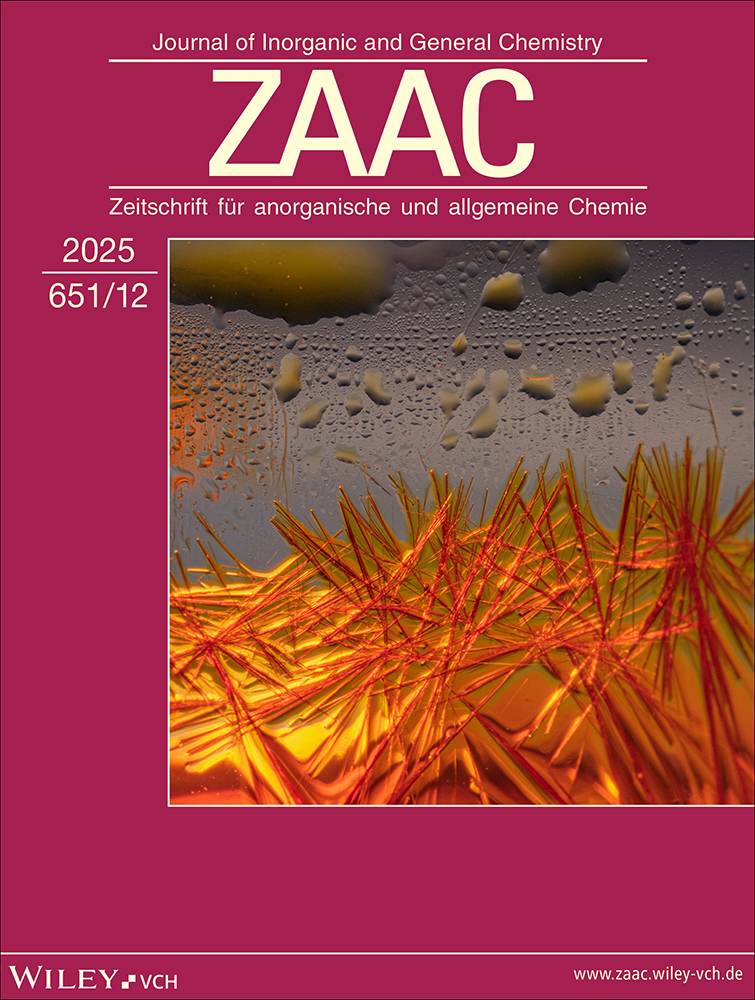[Hg8(μ-n-C3H7Te)12(μ-Br)Br3] — Synthesis and Structure
Abstract
The novel mercury-tellurium cluster [Hg8(μ-n-C3H7Te)12(μ2-Br)Br3] is formed during the reaction of HgBr2 and (n-C3H7Te)2Hg in DMSO. Its crystal structure has been elucidated showing [Hg8(μ-n-C3H7Te)12(μ2-Br)]3+ units with a bromine-centered distorted Hg8 cube. The mercury atoms are bridged by n-C3H7Te— ligands and the resulting clusters are linked to a three-dimensional network by bromine atoms. The close packing of the cluster is mainly determined by the flexible n-propyl residues of the telluride building blocks.




